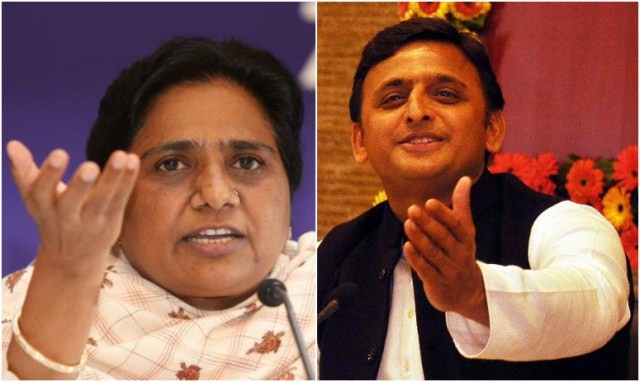
Bahujan Samaj Party and Samajwadi Party have reportedly finalised seat sharing arrangement for the upcoming Lok Sabha polls. They have given three seats to Ajit Singh's RLD in western Uttar Pradesh but refused to bring Congress on board for LS seats up for grabs in UP. The alliance will however not field any candidates against Sonia and Rahul Gandhi in Amethi and Rae Bareilly.
How does this portend for the grand anti-BJP front at the national level? Have SP-BSP joined ranks to cut Congress to size after the Grand Old Party refused to cede any space to UP parties in MP, Rajasthan and Chattisgarh?
And answer to these questions lies in a close scrutiny of Phulpur and Gorakhpur by polls last year. And also the impact of SP-Congress alliance on poll outcome in the state assembly elections in 2017.
In the Phulpur loss as well in Gorakhpur, there is an important lesson for the anti-BJP alliance in Uttar Pradesh — a Bihar-like mahagathbandhan may not be as effective in UP. Perhaps a triangular fight, as was seen in these elections suits the SP-BSP combine and perhaps the Congress as well.
Post mandal-kamandal era, the Congress’ existence in the state has been restricted to a few principalities. A dozen at the most. When the going is good, the divisional satraps win. When the going is bad, only commanders-in-chief manage return to the Lok Sabha.
Despite the protracted existential crisis, the Congress has a less than 10% vote base in the state, primarily amongst the upper caste and urban electorate. But quite unlike the BSP and the SP, which have niche caste vote banks, this amorphous vote of the Congress is non-transferable in alliance with any of the non-BJP parties.
For instance, a former Congress minister in the last party government in UP led by ND Tiwari recalls the 1996 Assembly when Kanshi Ram and PV Narsimha Rao decided to contest together.
“The only expenditure I incurred in that polls was in providing basic rations to the BSP workers. They were so committed and requested that only arrangements for food be made. And every BSP vote was transferred to us,” said the former Congress leader who used to contest from Sitapur district in central UP.
But that can’t be said of the Congress vote. And this vote, if there is a grand alliance between BSP-SP and the Congress, is most likely to shift to the BJP. Say for instance, in Phulpur this time around, if the Congress had not fielded a Brahmin candidate, the vote may have fallen entirely in BJP’s kitty. SP candidate in Gorakhpur won by a margin almost equal to the votes polled by Congress!
A back of the envelope analysis of the 2017 UP Assembly polls shows that the SP or the BSP would have retained many seats if the Congress would not have been in an alliance with the SP.
Secondly, in a polarised election, an anti-BJP mobilisation of opposition parties tends to suit the BJP narrative and strategy. A BJP versus others fight has a high possibility of metamorphosing to Hindu versus others election. The Congress in the fray tends to temper the element of polarity, thus giving space to SP-BSP in making the polling caste-centric.
In Phulpur and Gorakhpur, it is difficult to say if Congress’s decision to keep itself out of alliance was out of compulsion or design.
In 2019, it will not be surprising if status quo is maintained. SP-BSP may, however, tactically field candidates to suit Congress’s game-plan in about a dozen seats where the grand old party is strong in UP.
Say in Kanpur, Congress is likely to have a strong candidate in former union minister Shriprakash Jaiswal. A Muslim candidate fielded by SP-BSP coalition would dent Congress' prospects. Similarly in a triangle contest, an upper caste candidate which will impact BJP's prospects would give an edge to the Congress.


.jpeg)

